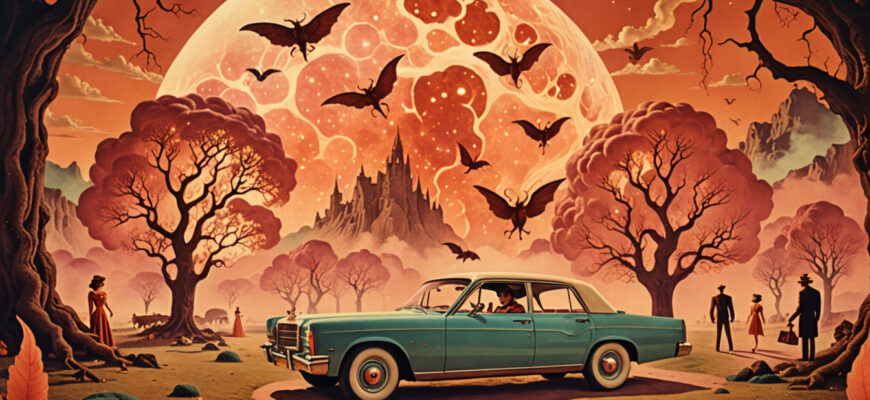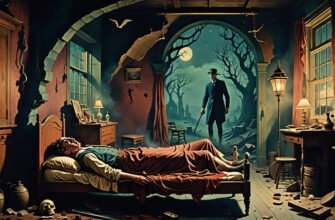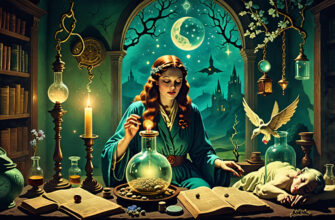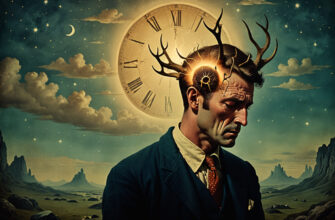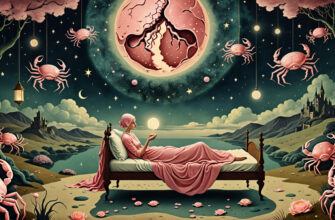You wake up drenched in sweat, heart racing, and convinced you just ran barefoot across a planet made entirely of spaghetti. Or maybe you just had a screaming match with a houseplant that looked suspiciously like your childhood math teacher. Either way, it wasn’t just a regular dream—it was a fever dream. These strange, often disturbing nighttime episodes happen when your body’s climbing the temperature charts. But why do they feel so real, so emotionally intense, and so hard to shake off the next day?
Fever dreams aren’t some mystical sign from the cosmos—they’re supercharged brain blips that hit when your system is fighting off sickness. These aren’t the “I forgot my pants at school” dreams. They’re more like “I’m stuck in a burning library where every book is reading me back.” The emotional weight is heavy. The visuals? Often borderline psychedelic. People don’t just have fever dreams—they remember them. Sometimes for years. Let’s break down what’s happening in that molten half-sleep state when your brain goes off the rails and starts feeding you its most unhinged content yet.
- What Is A Fever Dream?
- Why Is It So Intense?
- The Brain On Fire: What Causes Fever Dreams?
- Fever Dreams Vs Hallucinations Vs Nightmares
- When Do They Happen And Who Gets Them?
- Real Talk: What Fever Dreams Actually Feel Like
- Symptom in Symbols: What Fever Dreams Might Be Showing You
- Not about your ex, probably
- How the body talks in metaphors
- Recurring symbols in fever dreams
- Why They Stay With You
- Emotional residue
- Memory glue: stress + sleep disruption
- Sharing stories as a form of release
- When to Worry — and When to Just Ride the Wave
- Signals your dream may actually be a red flag
- Keeping it calm and weird when you’re sick
What Is A Fever Dream?
Not all vivid dreams qualify as fever dreams. What sets them apart is how they pair physical illness with a surreal narrative intensity. While regular dreams might tap into vague fears or daily leftovers from your waking life, fever dreams throw you into a full sensory freakout. The kind where you’re escaping giant worms made of light or watching your hands turn into clocks. And it all feels painfully logical while it’s happening.
They hit in ways most dreams don’t:
- Unwavering intensity: There’s no chill. Everything is fast, urgent, and strangely dire.
- Symbolism on steroids: The imagery is skewed and exaggerated—it’s like your brain is interpreting pain as metaphor.
- Emotional isolation: Many fever dreams feel oddly lonely, like you’re wandering a world with zero real human connection.
These dreams lean heavily towards the dark side. Think endless staircases, crumbling buildings, or unfamiliar landscapes that seem familiar and wrong at the same time. That sense of alienation? It’s not in your head. Well, actually—it is. But it’s common.
Why Is It So Intense?
High body temperature messes with your head—literally. When you’ve got a fever, your brain stops playing by normal rules. Signals get scrambled. Thought patterns loop. Everything gets dialed to eleven.
Here’s what might be contributing to the wild dream content:
| What’s Happening | The Impact |
|---|---|
| Spiked body heat | Alters brain function, leading to distorted thoughts & visuals |
| Sleep stage disruption | REM sleep is interrupted or shortened, causing chaotic dream fragments |
| Neurochemical overload | Inflammation and temperature shift neurotransmitter levels like dopamine and serotonin |
A fever doesn’t just kick your immune system into high gear—it throws a party in your brain’s control room. Compared to stress or trauma-related dreams, fever dreams can feel far less rooted in real-world memories. They don’t necessarily replay past events or fears. Instead, they twist the heat, discomfort, and overwhelm of fever into something abstract and cinematic.
If you’ve ever had a flu dream where the floor was lava and your dad had a triangle for a head—you’re not alone. These tangents make sense in a fevered mind. Normal dream logic gets kicked out, making room for something far more erratic.
The Brain On Fire: What Causes Fever Dreams?
When your body’s temperature climbs too fast or stays high too long, everything from your immune system to your sleep cycle starts misfiring. Fever dreams are your brain’s response to being stuck in survival mode without the luxury of proper rest.
Here’s what’s going down:
Immune chaos: Your body floods with cytokines—tiny chemical messengers that signal inflammation. These don’t just target germs. They reach the brain, stirring up everything from mood swings to sensory confusion.
Sleep gets weird: Normally, dreams emerge during REM sleep. But fevers often disrupt REM. You either get yanked out of it too early or don’t enter it properly. This alters your dream narrative and sensory perception.
Brain chemistry parties: Fever warps the levels of neurotransmitters. With serotonin, dopamine, and norepinephrine in overdrive, your emotional state in a dream can shift rapidly from fear to confusion to panic—all in under a minute.
Fever Dreams Vs Hallucinations Vs Nightmares
It’s not always easy to know where one ends and the other begins. A dream during a high fever might blur into a waking hallucination—especially right before you fall asleep or right after waking up.
Here’s a basic mental sorting tray:
- Fever dream: Happens during sleep, usually full of surreal coercive imagery and emotional discomfort.
- Hallucination: You’re awake (or half-awake) and seeing/hearing things that aren’t real—often confusional, especially in kids and older adults.
- Nightmare: Typically more grounded, rooted in fear or trauma, and socially relevant (being chased, attacked, failing at something).
Because fevers often block normal transitions between sleep stages, it’s not unusual to wake up unsure whether what just happened was imagined or seen through delirious eyes. The higher the temperature, the more slippery that line becomes.
When Do They Happen And Who Gets Them?
Anyone with a fever can have a fever dream, but some people might be more likely to spiral into the surreal zone.
Who’s most at risk?
- Kids: Their immune systems are still developing, and they tend to run higher fevers. Their brains are already wired for wild dreams—add a fever, and things get intense fast.
- Adults with strong reactions to infection: Some people spike higher fevers more easily, especially with illnesses like influenza or COVID.
Common triggers include:
- Flu
- Respiratory infections
- COVID-19
- Strep throat
- Anything that disrupts sleep and raises body temp
Even after the illness fades, plenty of people vividly remember their fever dreams for years. That’s because the mix of emotional intensity, physical stress, and broken sleep stamps those bizarre moments deep into memory. You’re not just dreaming—you’re surviving a cognitive storm.
Real Talk: What Fever Dreams Actually Feel Like
If regular dreams are Netflix, fever dreams are like being dropped in the middle of a mind-melting art film where you can’t find the plot or the door. Descriptions from people who’ve had them range from hilarious to horrifying.
Examples people have shared:
- Watching clouds catch fire and rain down language
- Being interrogated by a chair in a burning desert
- Walking into a room where time moves backward and everything smells like copper
Internally, it gets even weirder. You might feel aware of the dream but too tired to shift it. Thought loops wind tight—questions repeat, and exits feel blocked. It can mimic sleep paralysis or depersonalization, like watching yourself from outside your own body. And through it all, the overwhelming sense is: something is very, very wrong—even if you can’t say what.
That’s the heart of a fever dream. Not just bizarre—existentially wrong. And deeply, memorably intense.
Symptom in Symbols: What Fever Dreams Might Be Showing You
If you’ve ever woken up drenched in sweat, heart racing, trying to shake the image of a talking wall dissolving in flames…welcome to the fever dream club. And no, it’s probably not about your ex.
Not about your ex, probably
Contrary to what dream dictionaries may hint at, fever dreams aren’t your brain’s secret love letter to unresolved feelings or repressed desires. They’re not usually tucked-in trauma reflections. They’re raw sensory overload.
These dreams are less “deep truths from the soul” and more like static from a fried circuit board. The high temperature throws your brain’s system off balance—meaning your dreams get their script from weird body sensations rather than clear emotional metaphors.
How the body talks in metaphors
In a fevered state, the body feels physical distress first—and the brain just tries to keep up. It takes that literal sweatbox feeling and shows it as fire tornadoes or lava floors.
- Overheating? Hello, flaming buildings or skin that won’t stop burning.
- Lightheadedness becomes floating away from Earth like a balloon.
- Disorientation translates into dream mazes or missing floors.
The body isn’t speaking English—it’s tossing symbols out of chaos.
Recurring symbols in fever dreams
Ask around, and there’s a theme. People keep seeing melting faces. Skies collapsing. Silent cities. These images aren’t Horoscope-level mystical—they’re SOS messages from inside a stressed-out nervous system.
Common fever dream visuals include:
- Apocalyptic settings – often mirroring inner panic
- Melting or crumbling faces – possibly tied to temperature and blurred perception
- Isolation symbols – empty streets or unreachable people
It’s like your body grabs whatever symbols are lying around and mashes them into a warning graphic. Nothing subtle, all static and sirens.
Why They Stay With You
Fever dreams have no chill. The moment you wake up, it’s like stepping out of a thriller—except you starred in it, authored it, and still have no idea what it meant. So why do they stick so hard?
Emotional residue
When your body’s crashing from illness and your emotions are running on empty, dreams don’t use the slow lane. Every image feels haunted. Every sound echoes louder. That exhaustion you’re carrying makes the weirdness feel 10x more real.
Intense physical states—sweats, shaking, nausea—bleed emotional energy into the dream. That spike sticks like trauma. Even when your temperature drops, the dream bites linger.
Memory glue: stress + sleep disruption
- Stress messes with your sleep cycles. When REM is broken up or skips in strange loops, it gets wild.
- Your brain scrambles to jam that chaos into long-term memory—like putting junk in a diary just because it spilled on the page.
The result? Hyper-vivid dreams with fragmented scenes that somehow still feel like “a message.” Your brain wants to fix the signal—but fever just brings more noise.
Sharing stories as a form of release
Ever notice how people love to retell their fever dreams? It’s weirdly therapeutic. You say, “I dreamed I was being chased by a banana that shoots fire,” and someone else goes, “OMG, mine involved a garbage truck full of babies.” And suddenly, you’re laughing.
Retelling the weirdness helps make sense of it—or at least helps release it. Like any story about surviving chaos, it becomes a way to get control back. Whether it’s absurd or terrifying, talking it out helps break its grip.
When to Worry — and When to Just Ride the Wave
Fever dreams can be all kinds of bizarre, but sometimes they go too far. Knowing when a dream crosses into danger zone matters—especially if confusion spills into your waking state.
Signals your dream may actually be a red flag
- If your fever is 103°F or higher and you’re experiencing confusion or disorientation while awake—don’t wait it out. Seek medical help.
- There’s a line between trippy dreams and fever delirium. With delirium, people may not know who or where they are, and that’s a “go to the ER” situation, not just a dream story.
Keeping it calm and weird when you’re sick
If your fever’s average and the dreams are just wild, ride it out. Here’s how to ease it a bit:
- Keep your body cool: cold compresses, room ventilation, lightweight covers
- Stay hydrated: water, electrolyte drinks, or ice chips if you’re nauseated
- Wind down before sleep: even a brain on fire can benefit from calm—dim lights, quiet sounds
Sometimes you just let it be weird. Your body’s working overtime. Your dreams are just shouting in fever language. It’ll pass—and maybe leave you with a burning sky to laugh about later.
